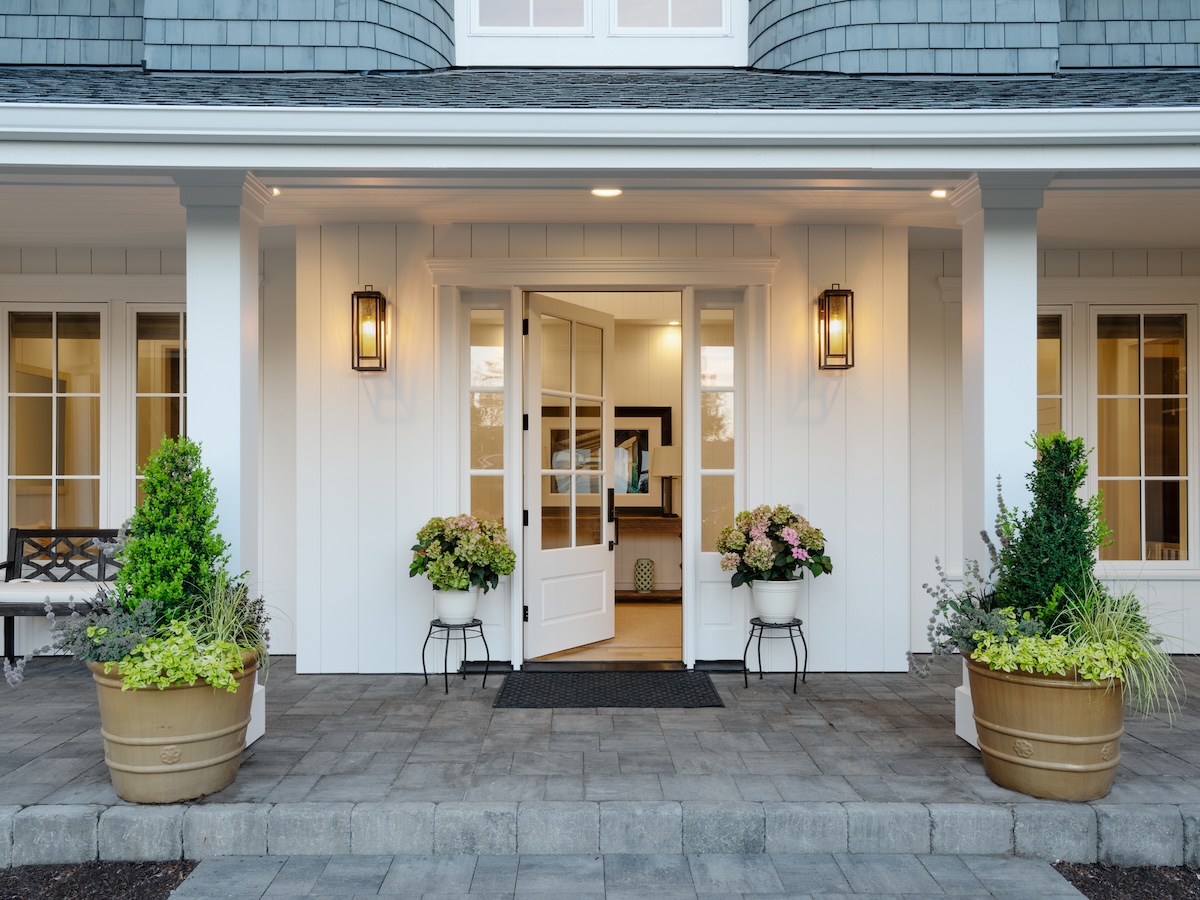

We may earn revenue from the products available on this page and participate in affiliate programs. Learn More ›
Your home’s front entrance and overall look from the street can make an impression on everyone who passes by. While it’s super easy to let it go, and just keep walking by the clutter, dead plants, and dingy decor, it doesn’t take much to keep your home’s entrance in stylish shape and be the envy of your neighbors and friends.
To make the most of the time and financial investment spent in upgrading your entry’s appeal, think critically about what will offer the biggest return on investment. Step out your front door, turn around, and take a fresh look at your entryway. Then consider the following easy upgrades and pick those that will give you the biggest bang for your buck.
Redo the Door
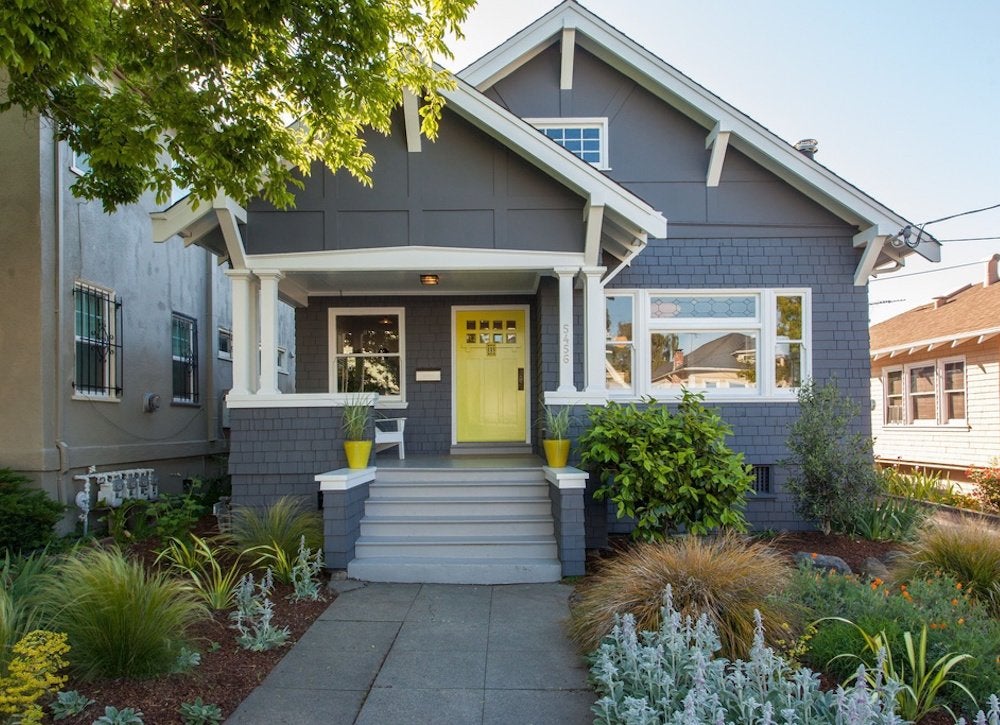
Photo: Zillow Digs home in Oakland, CA
Here’s an open-and-shut case of color therapy sure to make your entrance more exciting. Peruse some hues, then tape a few of your favorite swatches next to the door. Study them at various times of day and from different vantage points to select the door color that best complements or contrasts with your home’s exterior paint.
When you’re ready to commit, opt for exterior acrylic paint—a flexible, anti-mildew formula is ideal. Remove locks and knobs (or tape around them if you paint very carefully), and prep the door by wiping, washing, and sanding it down for optimal adhesion. Prime first, then paint, using a brush for the details and a roller for wider surfaces.
Pro tip: Pros remove an entry door and set it up on sawhorses to paint it; this avoids runs and achieves a factory finish.
Upgrade the door mat.
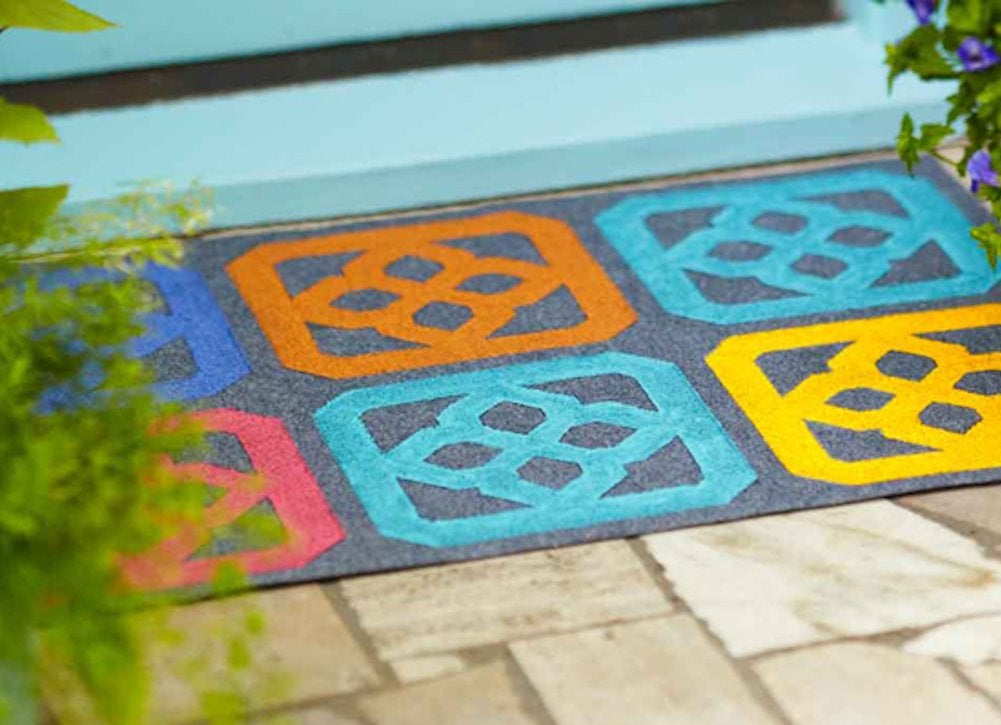
Photo: Lowe’s
Nothing says, “Come on in!” like placing something pretty at your doorway—and with a stencil pattern, you’re halfway there. Tape the stencil in place and use your favorite exterior paint to create a door mat or welcome sign. Or DIY an attractive wood slat doormat for a low-cost entryway upgrade. Not feeling crafty? Check online for quality premade mats that will add accents and a welcoming feeling.
Dress up your address.
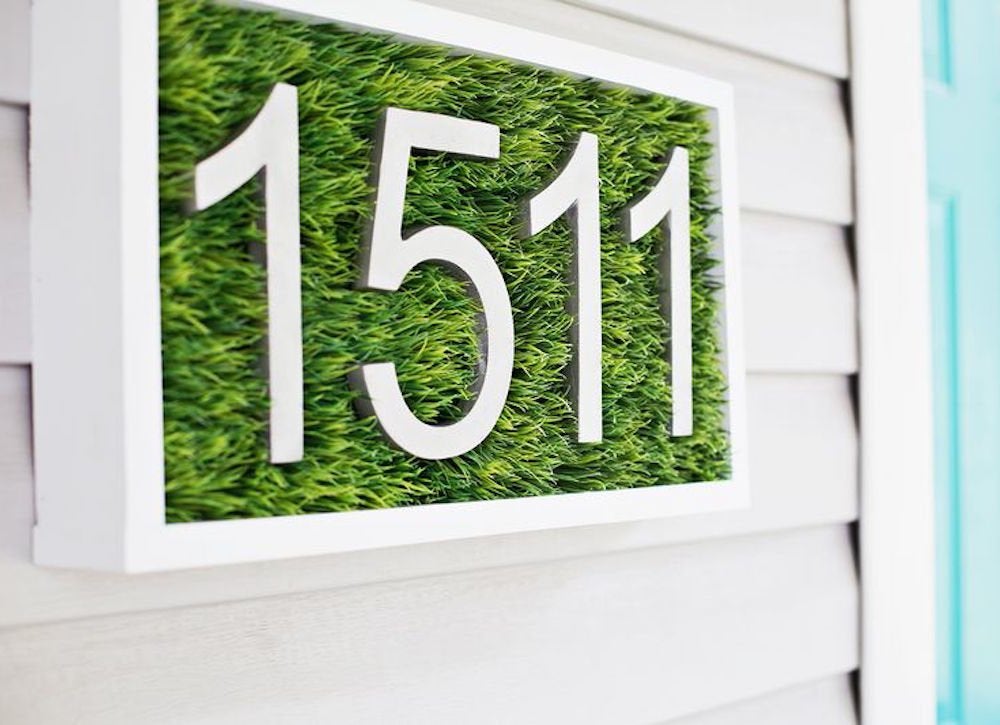
Photo: A Beautiful Mess
Who says the grass is always greener on the other side? Keep greenery front and center by first painting a wooden shadow box in a color that complements your home’s exterior, like the color of the trim. Then, grab some faux grass (available at craft stores), cut it to fit the case, and secure it with multisurface glue. To make your house numbers look like they’re nestled in the blades, use wood screws that are a little shorter than the grass. After installing the digits, mount the assemblage on your house with appropriate hangers, such as vinyl or brick clips.
If you aren’t into the faux-grass look, you can fill the background with something else, like a section of outdoor rug or faux ivy. Or simply upgrade your house numbers for a more modern or attention-getting look.
Mulch your garden beds.
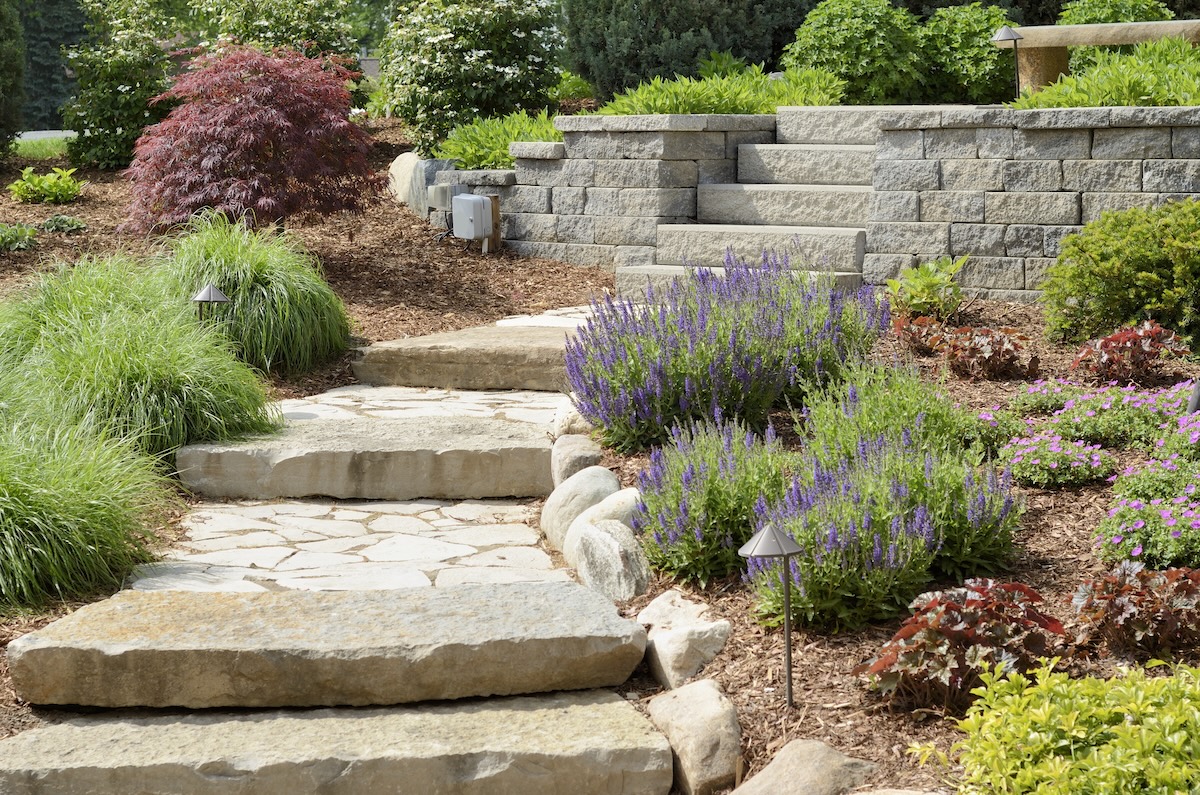
Photo: River North Photography
Mulch, whether in the form of decaying leaves, bark, or compost, keeps soil healthy and moist and keeps your flower and garden beds looking great in the process. Plus, if you order enough mulch, chances are you can have it delivered to your house. The key to putting in mulch beds with pro appeal? Outline the shape you want with a garden hose, then dig the earth inside the line and remove the weeds and crabgrass. Spread mulch in the tidy beds, and pat yourself on the back when you see the results.
Pro tip: Mulch comes in different colors and sizes. Choose the type of mulch that’s best for your garden, and consider using mulch of different colors or textures to add dimension to the beds.
Make over your mailbox.
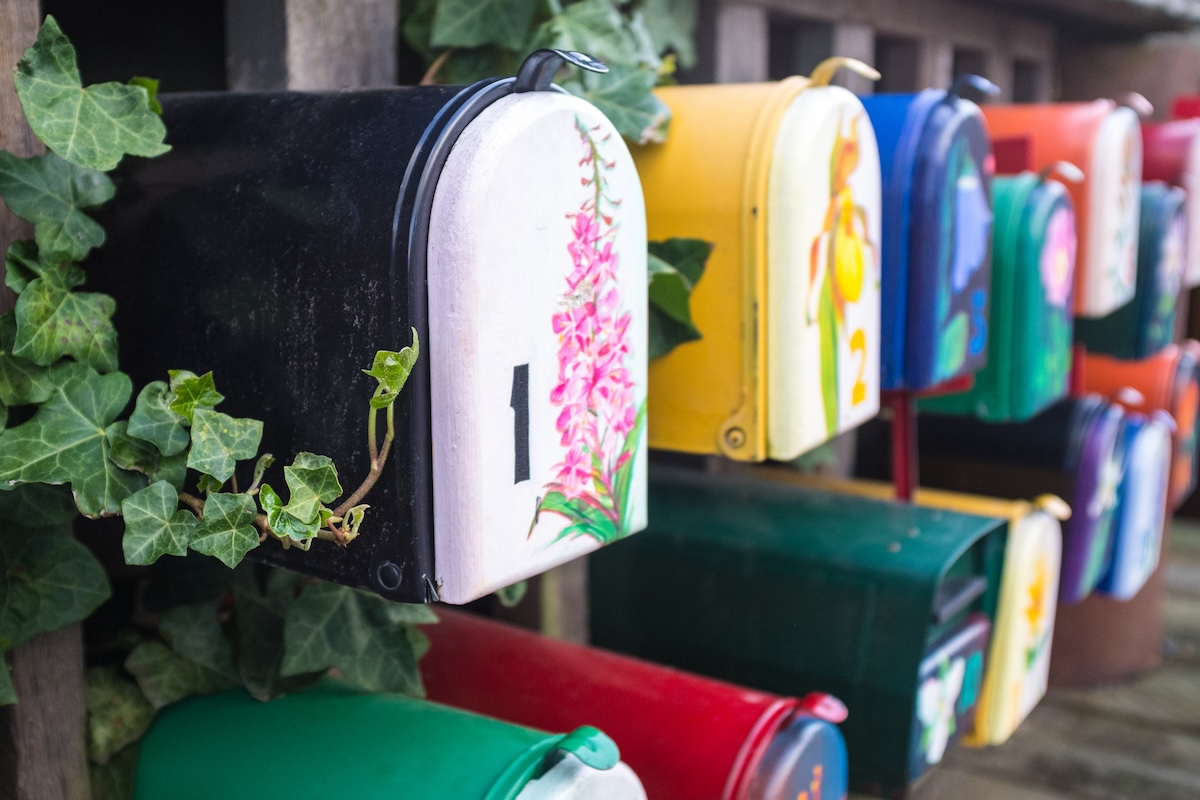
Photo: Yun Han Xu via Getty Images
Because it’s constantly exposed to the elements, a metal mailbox really takes a beating. To rejuvenate yours, remove it from its post and take off the hardware. If it’s rusty, gently remove the rust from the metal with a wire metal brush and wipe away any debris. Then, shake some outdoor spray paint in a formula appropriate for metal and apply it to the mailbox, holding the can about 8 inches away. If you want to be extra fancy, paint the inside of the mailbox in a bold color. Just don’t forget to paint its flag in a bold, contrasting color like red so the mail carrier will notice it. Wait until the paint cures before reattaching the mailbox to the post.
Hang window boxes.
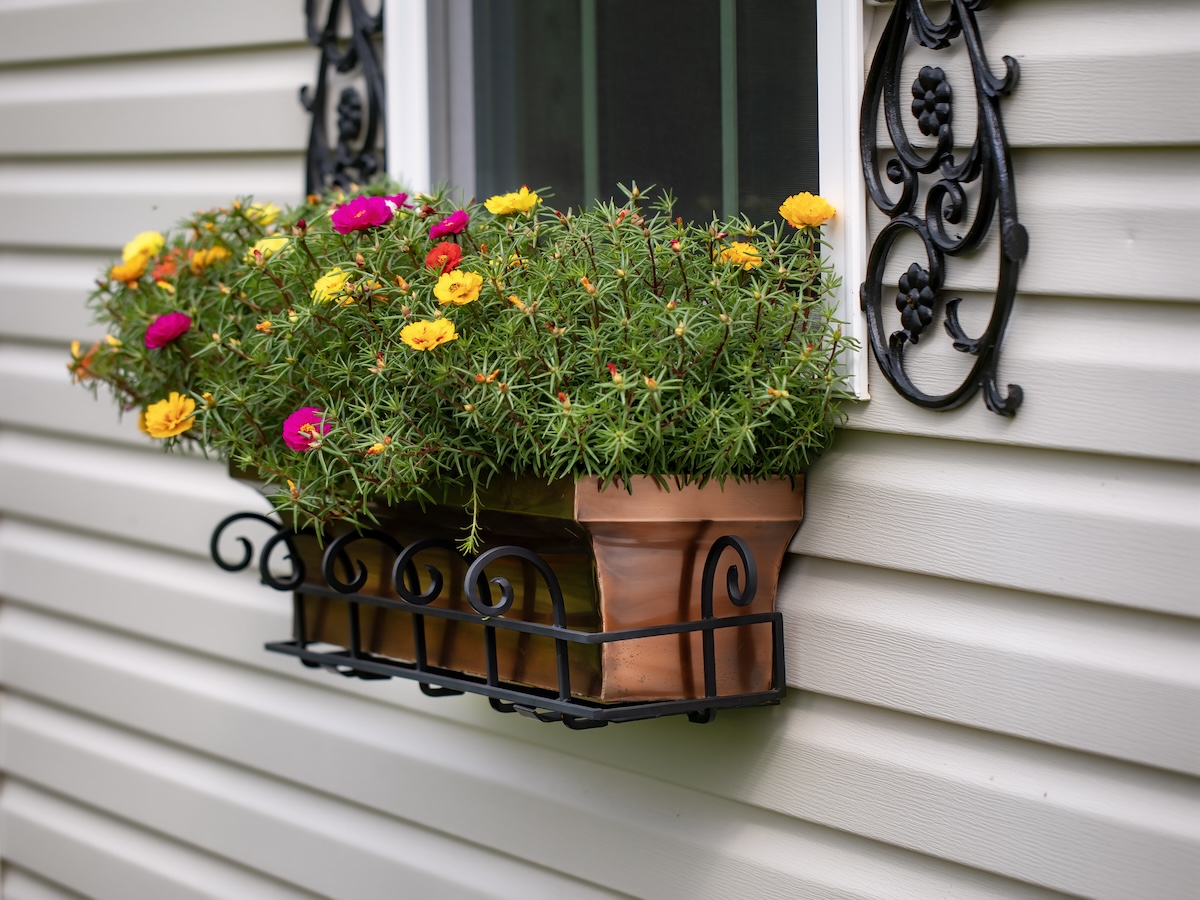
Photo: ALI MAJDFAR via Getty Images
Hanging a cheerful, miniature garden right on your house will instantly upgrade your home’s exterior. For DIYers, building a planter box usually doesn’t take longer than a weekend. If you’re not handy with a hammer, you can buy a ready-to-hang set of window planter boxes to complete this curb appeal project in little time. Whether you buy or build, you’ll want to make sure the planter is stable and securely attached to your home. Then fill it with a basket liner, add potting soil, and put in pleasing plants that are appropriate for the light conditions on that side of the house.
Create a country chic garage door.
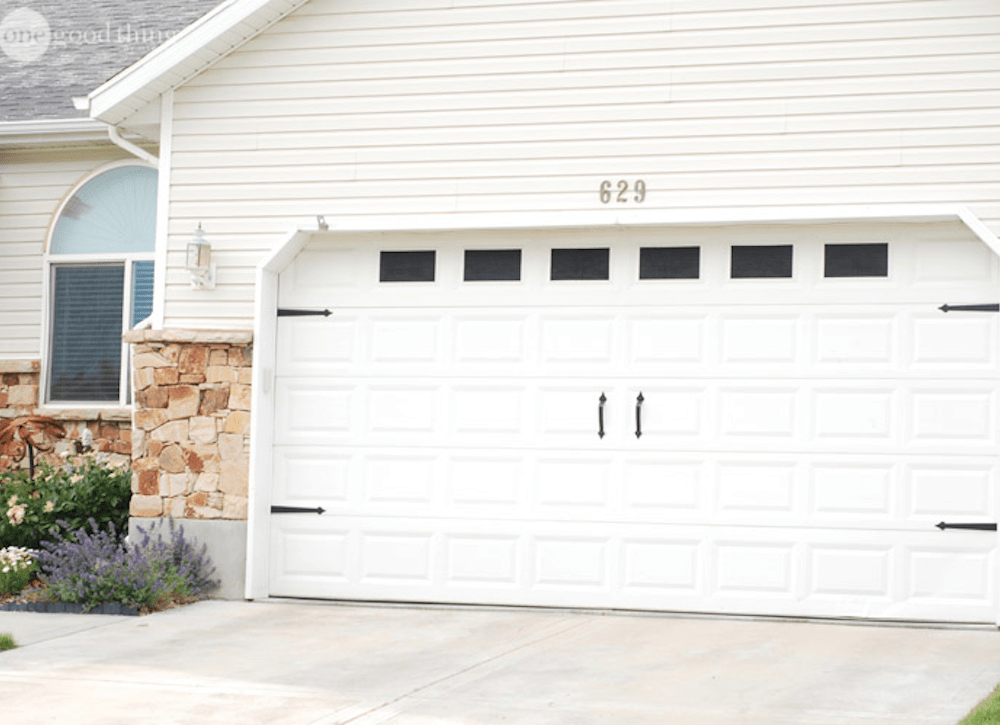
Photo: One Good Thing by Jille
All it takes is black paint and a few pieces of hardware to bring carriage-style charm to a generic garage door. For about $23, you can purchase a set of faux metal handles and hinges for your garage door as well as magnets to attach them. Once you’ve installed the hardware, tape off a row of rectangular panels toward the top of the door, then prime and paint with black exterior paint to create the illusion of windows.
Colorize your porch furniture.
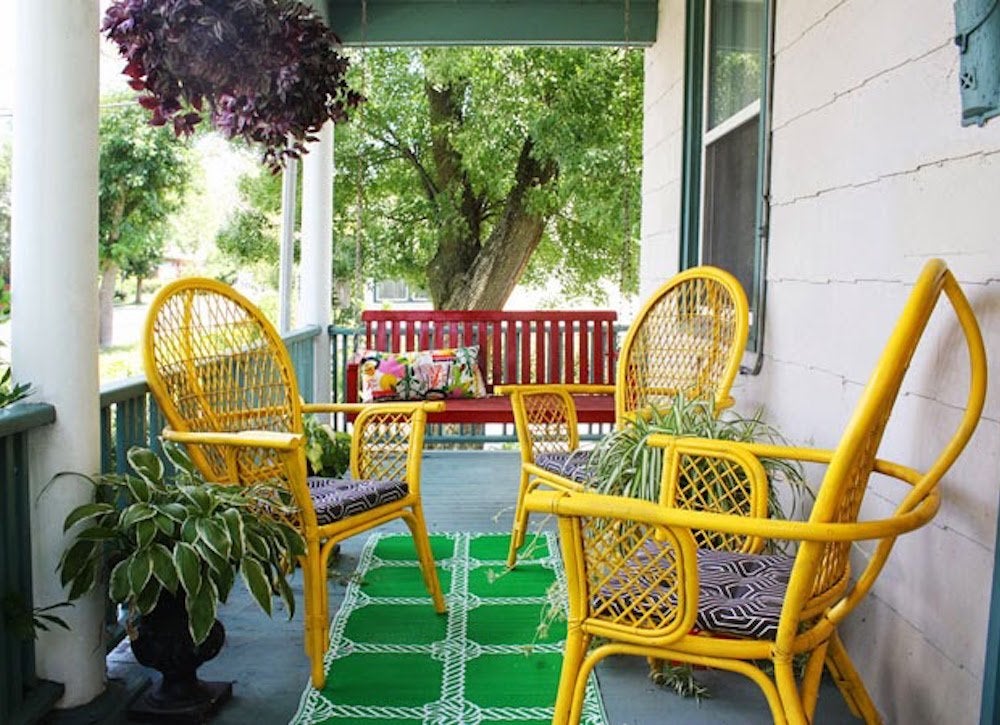
Photo: Aunt Peaches
Color can make most anything cuter, and older outdoor furniture can usually use an infusion of fresh paint. Fortunately, pieces like the bamboo chairs shown here are pretty easy to spray paint. To ensure long-lasting results, don’t skimp on prep: Wash and rinse the furniture well, and let it dry thoroughly. Protect the area with drop cloths, spray on primer first, then when it’s dry, apply your exterior color of choice: Hold the can about 8 inches from the surface and use a sweeping side-to-side motion to quickly and effectively upgrade your front porch.
Add or update window shutters.
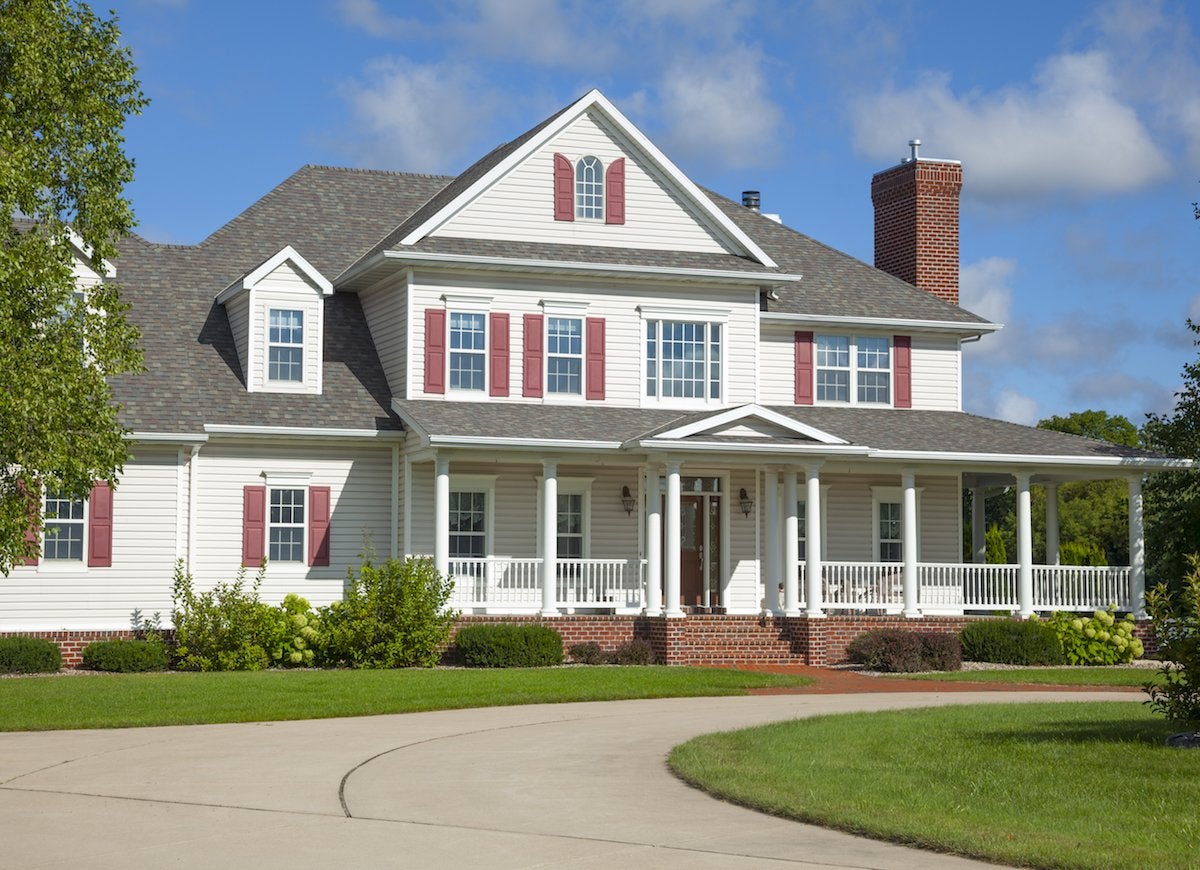
Photo: iStock
Shutters lend a stately look to a home’s facade, and simply painting them in a color that complements the home’s exterior or updates the look can go a long way toward instant curb appeal. If you opt for purely decorative shutters, eschew the cheap-looking vinyl variety and mount the shutters carefully. Shutters also provide privacy and help insulate the house when closed, which can appeal to potential buyers and help with indoor temperature control. Make sure the shutters are the right size and shape for your windows. For authenticity and function, affix them to the window casings, not to the house.
Brighten paths with lighting.
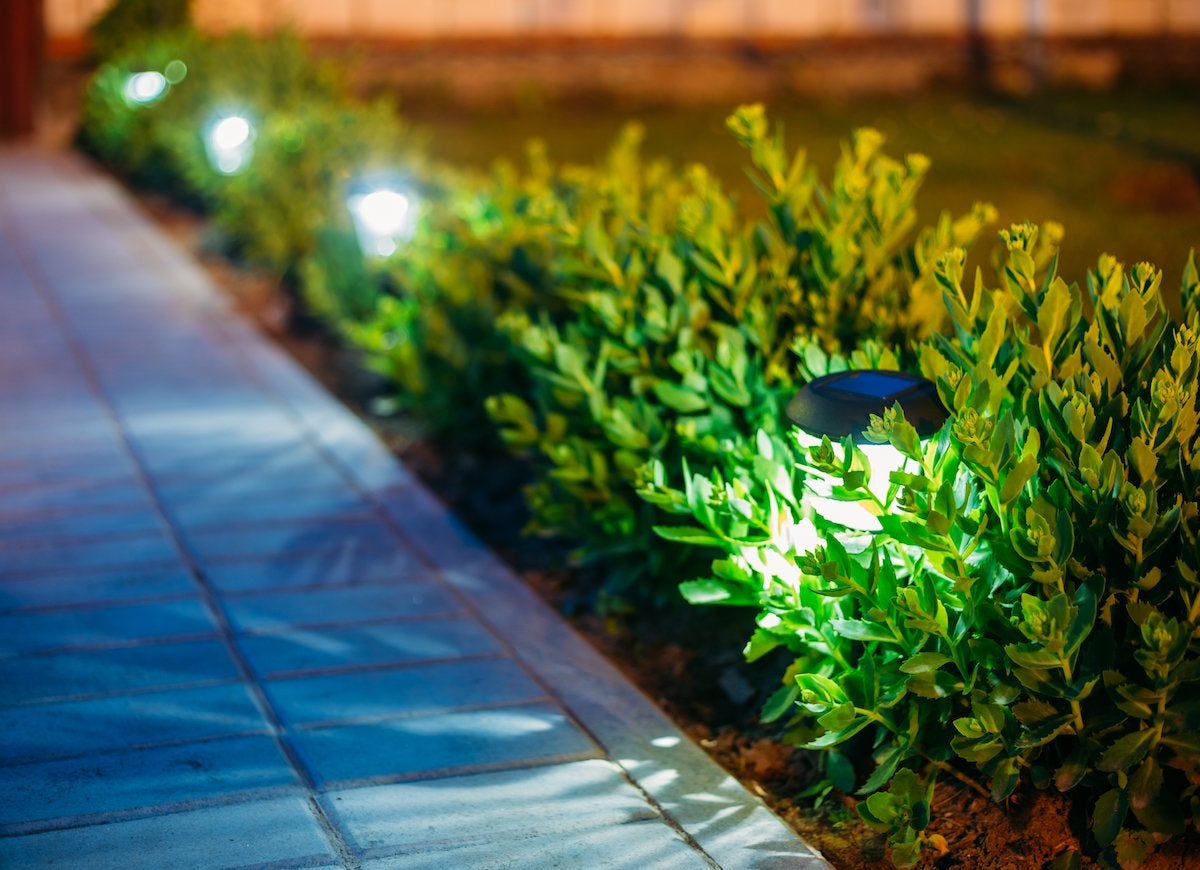
Photo: iStock
Illumination enhances your outdoor spaces, transforming eating areas into romantic nooks and decks into late-night party spots. Including outdoor lighting in your exterior plans is also important for safety and security. Start by purchasing solar-powered landscape lighting to light walkways after dark; outdoor solar string lighting and LED strip lighting can liven up decks and patios. Then, install the lights and enjoy the evening glow.
Paint your entry stairs.
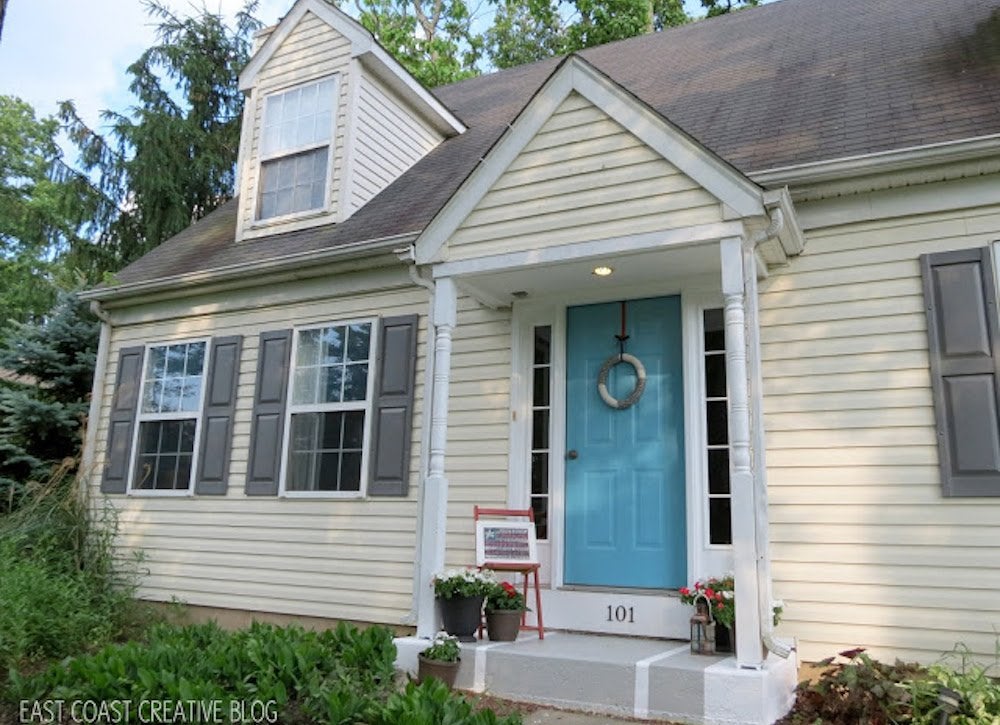
Photo: East Coast Creative
Just because you walk on your concrete steps doesn’t mean they can’t look cool. A fresh coat of paint will spruce them up, or go the extra mile and give them a bold stripe for a low-cost outdoor DIY project. Start by cleaning the concrete thoroughly with soapy water. When the steps are dry, apply concrete primer. (Its thinner formula seeps into the material.) Use a roller to paint the concrete. When it’s dry, mark off stripes with painter’s tape. Apply a second coat in a contrasting color, and when that coat’s dry, pull off the tape and admire your handiwork.
Add containers and colorful plants.
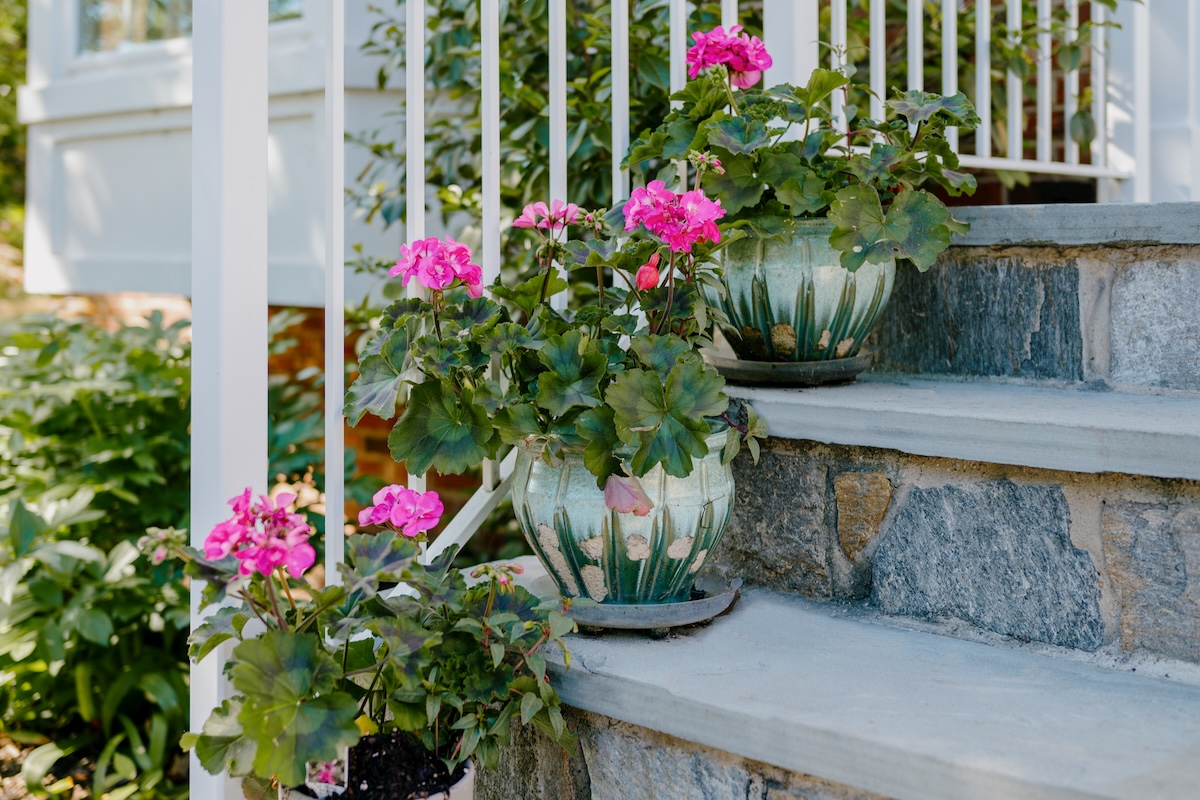
Photo: Grace Cary via Getty Images
If you’re fickle about your outdoor decor, porch planters might be the perfect solution. You can change the blooms and greenery according to the season or your mood, and you can DIY planters out of all sorts of things, from old washtubs to wooden crates. Drainage is key, so be sure to drill a few holes at the bottom of an upcycled item and add a tray underneath to prevent staining the steps or porch. Once your planters are in position, add plants. Think coleus or petunias in summer, mums or decorative cabbages in fall, or ferns for lush yet easy-care plants.
Paint your house number on your walkway.
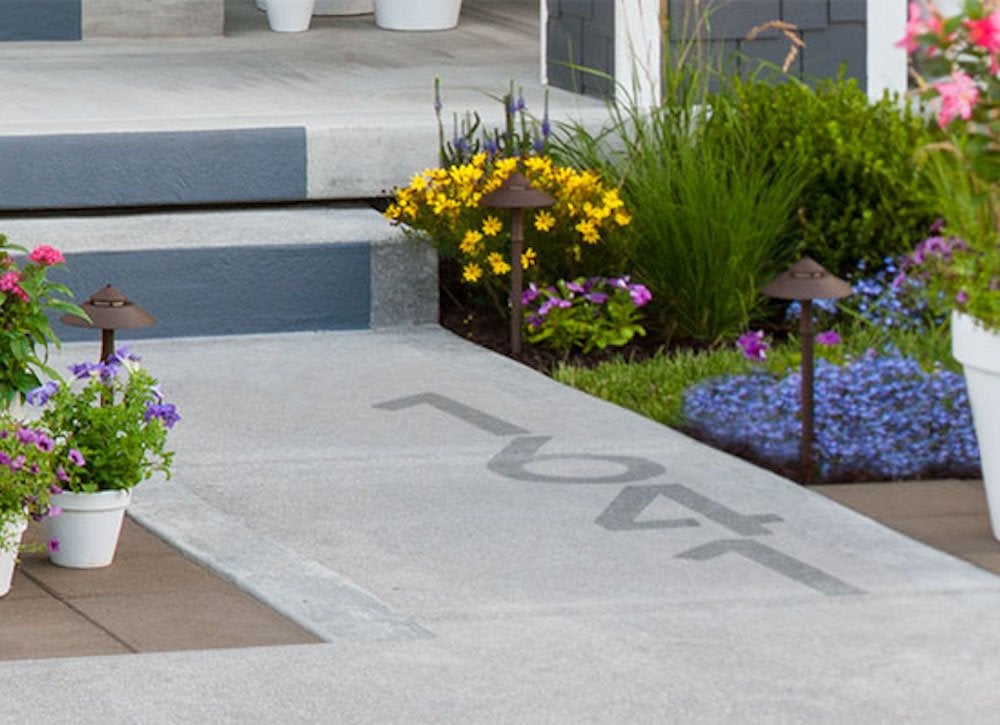
Photo: Lowe’s
With house numbers this large, it will be even easier for friends to find your house. These distinctive digits were created with NeverWet, a superhydrophobic coating that repels water and won’t get slippery. Either paint them freehand, look online for stencils, or make your own stencils out of cardboard or mat board, cutting them out with a razor blade to ensure crisp, neat edges. Wash your sidewalk well with detergent and water, and rinse with a hose. When it’s dry, position the stencils, hold them in place with duct tape, and then spray on the coating according to the manufacturer’s directions.
Plant a mailbox garden.
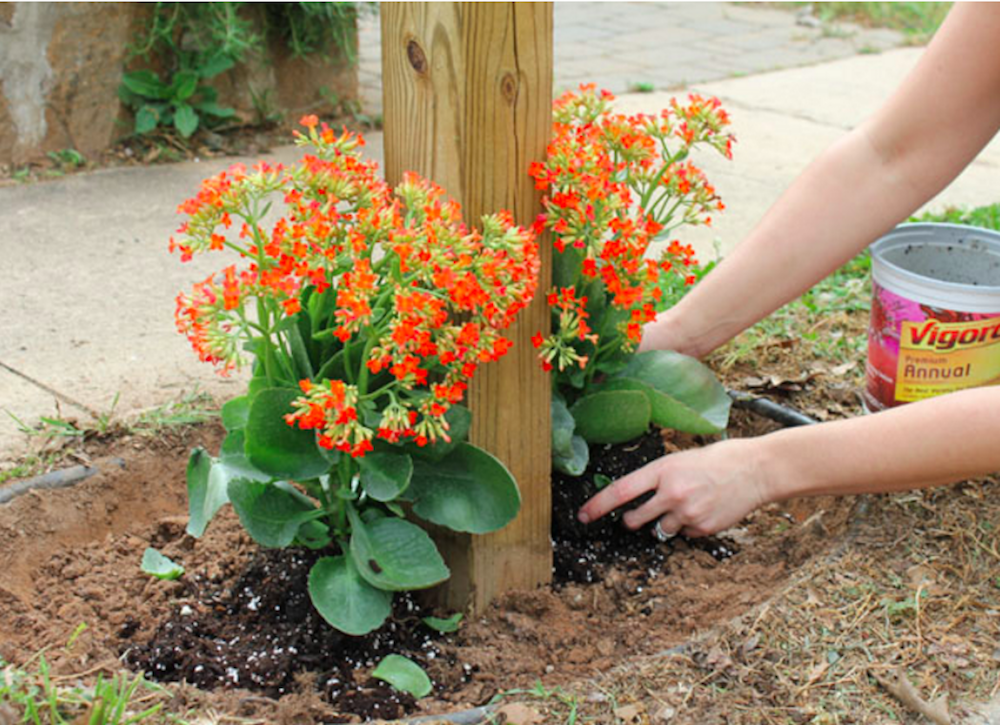
Photo: The Home Depot
A mailbox doesn’t have to be boring! Perk up your mail carrier’s day (not to mention that of passers-by) by landscaping around your mailbox. Purchase annuals that tolerate full sun, dig up the soil, and plant away. Sow seeds to save money, or purchase inexpensive annuals at the home and garden center.
Dazzle with a porch light.
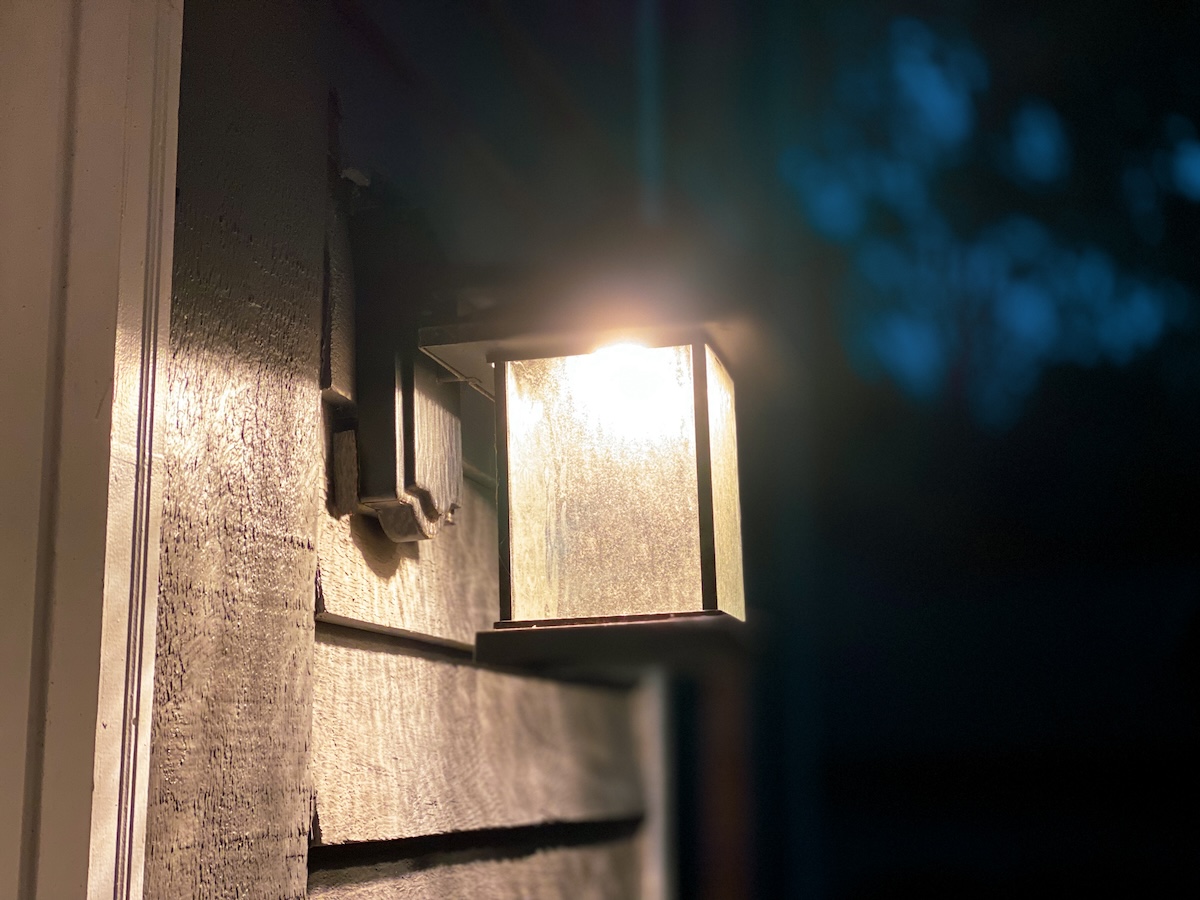
Photo: Catherine McQueen via Getty Images
A dated or undersized porch light isn’t doing you any favors. Consider upgrading to a new energy-efficient LED model that suits your home’s style and your lighting needs, like the ALVIME modern outdoor wall sconces. A wall-mount light by the front door is traditional, but you can also add a pendant or flush-mount in a porch ceiling. An outdoor-rated ceiling fan with a light is also a lovely addition to a front porch. For curb appeal and extra convenience, find porch lights that have motion sensors or operate by battery or solar power.
Paint door and window trim.
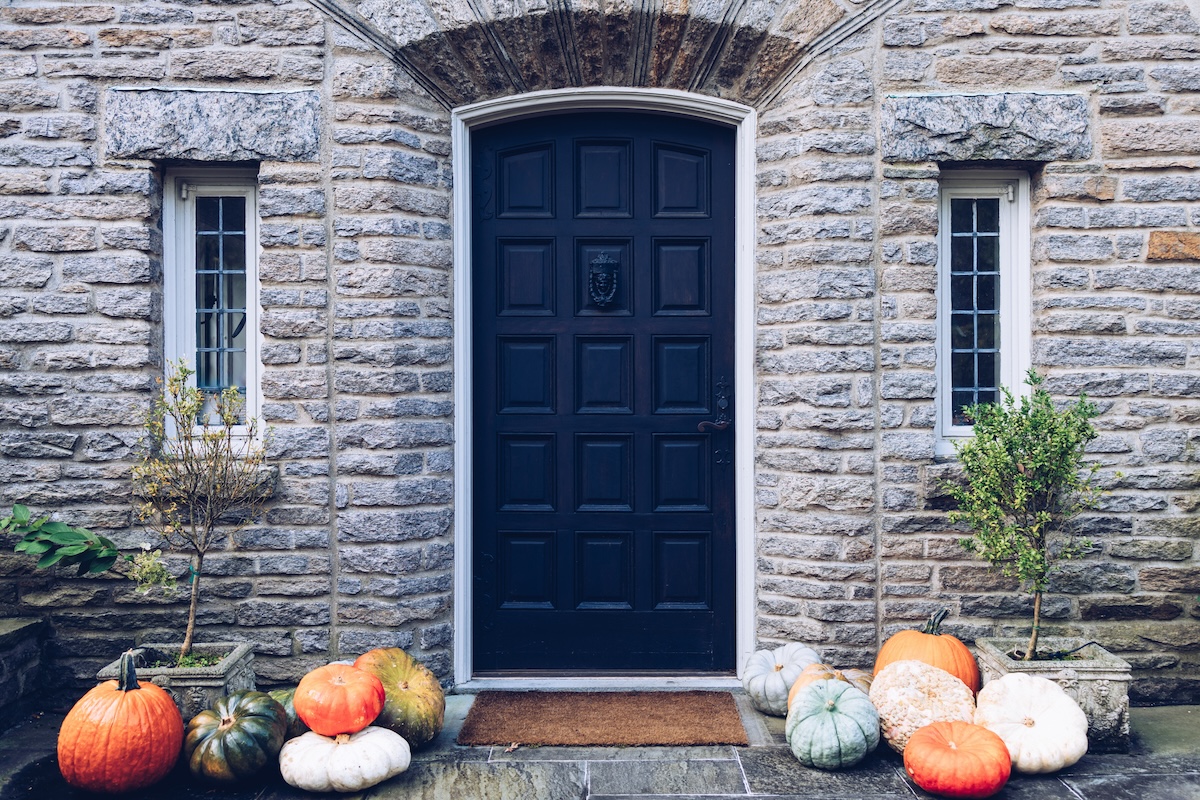
Photo: Catherine McQueen via Getty Images
Entryways see a lot of action, and sometimes just painting the trim around the front door and windows can be hugely transformative. Before you pick up a brush, clean the trim with soap and water and let it dry completely. Choose an exterior-rated paint in a semi-gloss and apply the paint with a high-quality, angled paint brush. If your trim hasn’t been painted in more than a decade and it’s looking dingy, apply a coat of primer before painting.
Throw down an outdoor rug.
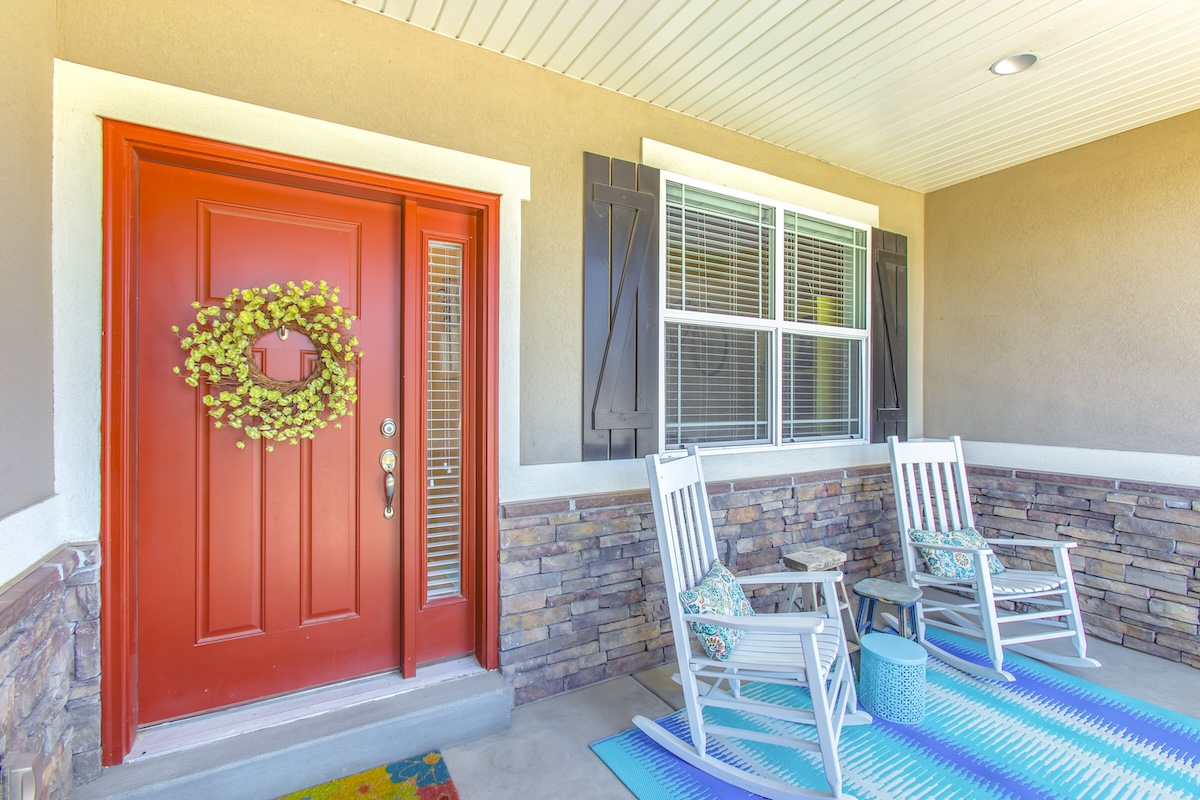
Photo: Jason C. Finn/OrangePalmStudio via Depositphotos
Whether you have a generous porch or a small stoop outside your front door, adding an outdoor rug can completely change the first impression vibe of your home. Offered in many different patterns, colors, and materials, outdoor rugs are typically easy to clean and hold their color longer than an indoor rug that’s in direct sunlight. Opt for a bold pattern, like this black-and-white wikiwiki rug; a rug that contrasts with the color of the entry door would really pop, too.

All You Need to Care for Your Lawn & Garden
Keeping your grass green and your plants thriving doesn’t just take a green thumb—it starts with the right tools and supplies.